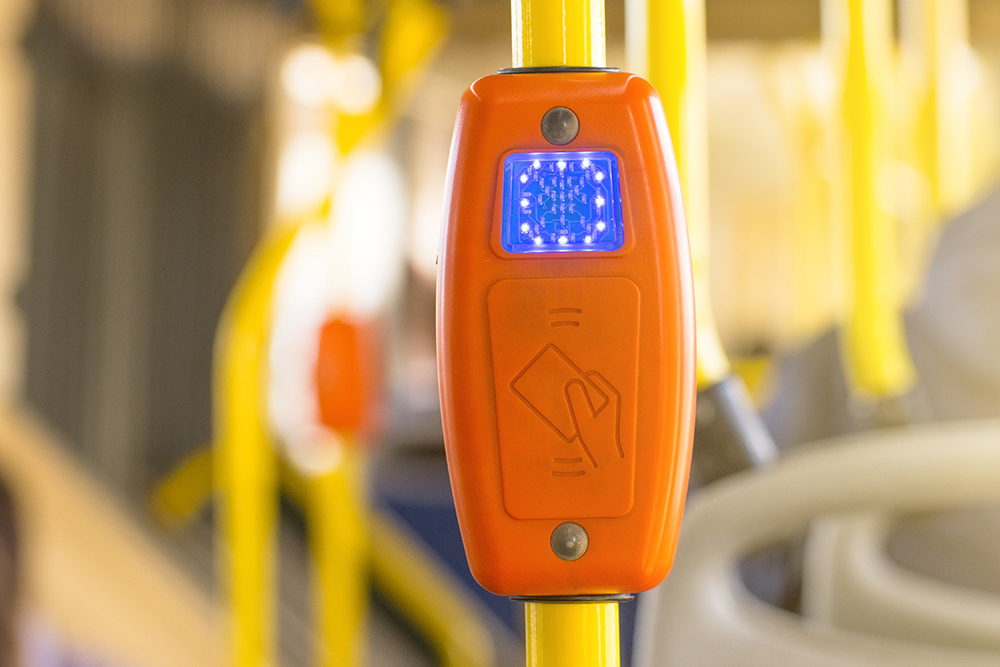
Throughout its two and half years in office, the Biden Administration has been pointing to a harsh mobility reality: more than 15 million US residents lack access to adequate transportation. That’s one in 20 people who face mobility-related barriers to employment, healthcare, education and food shopping. The effects of such access problems are widely felt, and include restricting their economic freedom, limiting their medical choices, and reducing their life expectancy.
The US Department of Transportation has recognised the seriousness of the issue with its recently released Equity Action Plan. This is a national programme which prioritises the role of transportation equity in wealth creation, with a focus on the power of community-level interventions and on expanding low-cost access.

Mobility insecurity is a global issue, and governments are starting to take note of the way in which transportation and economic mobility go hand-in-hand. This has emerged as a top priority for public transit agencies, and also for private sector providers of transit solutions. One of these is Cubic Transportation Systems, whose COO Boris Karsch says: “We’re beginning to see many cities transitioning from deploying technology using traditional system integration approaches to the newer SaaS [Software as a Service] models. SaaS has long been adopted by the private sector, and the good news is that SaaS is transforming the speed of innovation and reducing the cost of technology in urban mobility management applications.”
With decades of experience in this field, Karsch has lately become quite excited about two new waves which are sweeping through mass transit agencies around the world.
Mobility on Demand (MoD), as defined by the US Department of Transportation, is a concept based on a simple principle: transportation is a commodity where different modes have different economic values. These are distinguishable in terms of cost, journey time, wait time, number of connections, convenience and other attributes.
And Mobility as a Service (MaaS) combines public and private transportation services within a given regional environment. It provides travel options which are more holistic and more people-centered. The goal is to enable end-to-end journeys paid for by the user, as a single charge.
In the past, public transportation has been a one-size-fits-all industry with little regard for how services are used and the demographics of its customers. This has resulted in steady ridership declines, along with increased congestion. Urbanisation is taking its toll on those cities with faltering legacy transportation infrastructures that seem to be stuck in the past.
However, modern, information-driven technologies are leveraging the power of data to help agencies transition into the modern era. Innovative mobility services are now available, such as Umo from Cubic, which collects data at regular intervals to improve user experience, growing and adapting as it integrates all of a region’s transportation options into one platform from which both agencies and users stand to benefit.
When addressed effectively, optimising mobility encourages people to leave their cars at home and engage with public transit as a go-to, rather than as a last resort. This in turn brings ridership back, along with the revenue that agencies need to streamline systems and improve quality of life.
In particular, the implementation of SaaS-based technology enables public authorities and transport providers to build, operate and scale affordable information-driven passenger experiences. For example, integrated payment solutions are appearing in communities across the country and beyond with services being designed to meet the needs of varying consumer demographics and requirements.
For instance, in Milwaukee, a US city of more than half a million people, the County Transit System is adopting a SaaS-based fare collection system, designed to fit the needs of all transit riders, including those without smartphones or who don’t have a bank account. Riders can choose to pay for their transit trips whichever way they prefer, including via contactless credit cards, mobile phones using a new app, a new smart card reloadable online or at retail outlets, or cash on board the buses.
Canada’s BC Transit, which carries 58 million passengers every year across 88 transit systems in 130 communities across British Columbia, is implementing coordinated payment services to improve customer experience regionally. The strategy is to make the network experience safer and more convenient for travellers, and it’s this kind of technology-led approach that underlines the increased confidence major cities have in this approach to providing integrated services.

Crucially, SaaS is an enabling technology which allows transport systems of all sizes to build and operate these versatile services. These are quickly becoming a ‘must have’ for today’s digitally-native consumers who are accustomed to quick and easy payment processes. While major regional and city-wide solutions are among the most high-profile examples, smaller regional innovation is just as significant in the context of modernising transport infrastructure as a whole.
Consider one useful example: the Valley Regional Transport organisation in Boise, Idaho. Its system’s transit passes and services payments are being streamlined via an advanced SaaS-based app and smartcard solution. In addition to making transit passes and fares easier to purchase, their app features an all-in-one service that includes trip planning, real-time bus route information and ride-share options through Lyft and Uber. The app will also integrate additional transit passes and services throughout the upcoming year, such as vanpool, shuttle service, parking, bike-share and scooters.
For the past year, the Monterey-Salinas Transit (MST) agency in California has been using a contactless payment system that lets riders pay fares with the same card or mobile wallet used for everyday purchases. MST is the first California operator to introduce the simple tap-to-pay option in a project led by the California Integrated Travel Project (Cal-ITP), and organised and funded by Caltrans, the California state government‘s Department of Transportation.
The aim is to simplify transit planning and payments. Cal-ITP organisers chose MST as a partner due to its diverse ridership. That includes students, seniors, ag workers, low-income families, tourists, and other rural and urban passengers.
MST worked with Visa and partners on four continents to address technical challenges and implement the payment system. Teams had to adapt traditional card readers to buses that travel between networks, while guaranteeing quick, consistent transactions for payment-enabled devices, pre-paid cards, and contactless debit or credit cards by Visa or Mastercard. During the project’s first six months, the number of MST customers using contactless payments tripled – and it continues to grow. Agencies across the entire state, and in most of the other 49 US states, have expressed interest in adopting the system, which MST is continuing to test through July 2022.
At Rogue Valley Transportation District, in Oregon, authorities are using SaaS to keep their technology services fresh. Over the past five years, it has implemented features such as fare capping as well as student ridership, selling passengers on the convenience of electronic payments, reducing the reliance on cash handling and increasing ridership.
Fare capping is an important illustration of the versatility these information-driven services are now providing. Whether a person uses the app or smartcard when boarding a bus, the system keeps track of each ride throughout the day and month. Daily fare capping is activated once a person completes two trips in a single day, allowing that person to take any additional trips that day at no cost. Similarly, monthly fare capping is activated once a person uses the equivalent of a 31-day pass over a calendar month. Each day a person uses their pass after that, there are no additional costs for trips for the rest of the calendar month.
As more examples of these digitally-driven and convenient services become available across towns, cities and entire regions, consumer expectations will continue to grow. This should be taken as a positive step in the process of reinvigorating public transportation systems. Those transport authorities which can meet the needs of consumers will be the ones best-placed to address the big challenges that face us. It may be good news, therefore, that one focus for Biden’s team, and for the billions of dollars which they’re investing into transport innovations, is MaaS.
Upward mobility
Since December 2021, SkedGo has been working with non-profit Feonix - Mobility Rising to develop mobility solutions for underserved communities that would otherwise struggle to move around freely. Currently working across three US states, SkedGo CEO John Nuutinen says that the partnership “ensures access to reliable and affordable transport, helping people get to work or medical appointments, travel in rural or low-density communities, and assist older adults”.
SkedGo’s API and technology introduces mixed or multimodal transport options to the communities that Feonix serves, with the N4 project in northern Nevada, the MI Ride project in Michigan and Arrowhead Transit in Minnesota.
Arrowhead is part of the USDoT’s Federal Transit Administration IMA grant pilot project and works to create advanced training and technology to enhance the public transit experience for seniors and individuals with disabilities. The ride-scheduling app lets users choose from scheduled public transit rides, Dial-A-Ride and volunteer drivers in the Duluth, MN and surrounding communities. Booked via the app, specially trained drivers take passengers to work in Grand Rapids, to the doctor’s office in Hibbing or to classes at Rainy River Community College. Arrowhead Transit provides affordable, safe, accessible public transportation and supports independent living and self-reliance.

MI Ride, meanwhile, is a ride-request app for registered paratransit users with an ADA number. The user-friendly app lets passengers request rides on both Detroit‘s MetroLift and Detroit‘s Smart paratransit services from their smartphone, in a matter of seconds.
In April 2022, Feonix used SkedGo’s technology to roll out the first phase of a statewide programme, N4 Connect. The new iOS and Android app connects users with public transit, volunteer drivers and human services providers throughout northern Nevada to schedule their trips. Social workers and case managers at hospitals can also use the app to explore and book transport for patients with a single ride request, even when multiple agencies are involved. The joint MaaS project between SkedGo and Feonix aims towards an ambitious goal: to break down barriers to improve quality of life for thousands of Americans. Only time will tell how well they fare.
Making sure that MaaS is offered in an accessible way is key to the success of these projects so far. Nuutinen explains that users can organise their journeys and see transport availability and price on their smartphone, or they can use their phone the traditional way, pre-booking, amending or cancelling trips via a call centre. Screen reader-friendly applications and easy to use interfaces improve accessibility. SkedGo’s aim is to offer MaaS in a form that, Nuutinen says, “reflects community need”.











